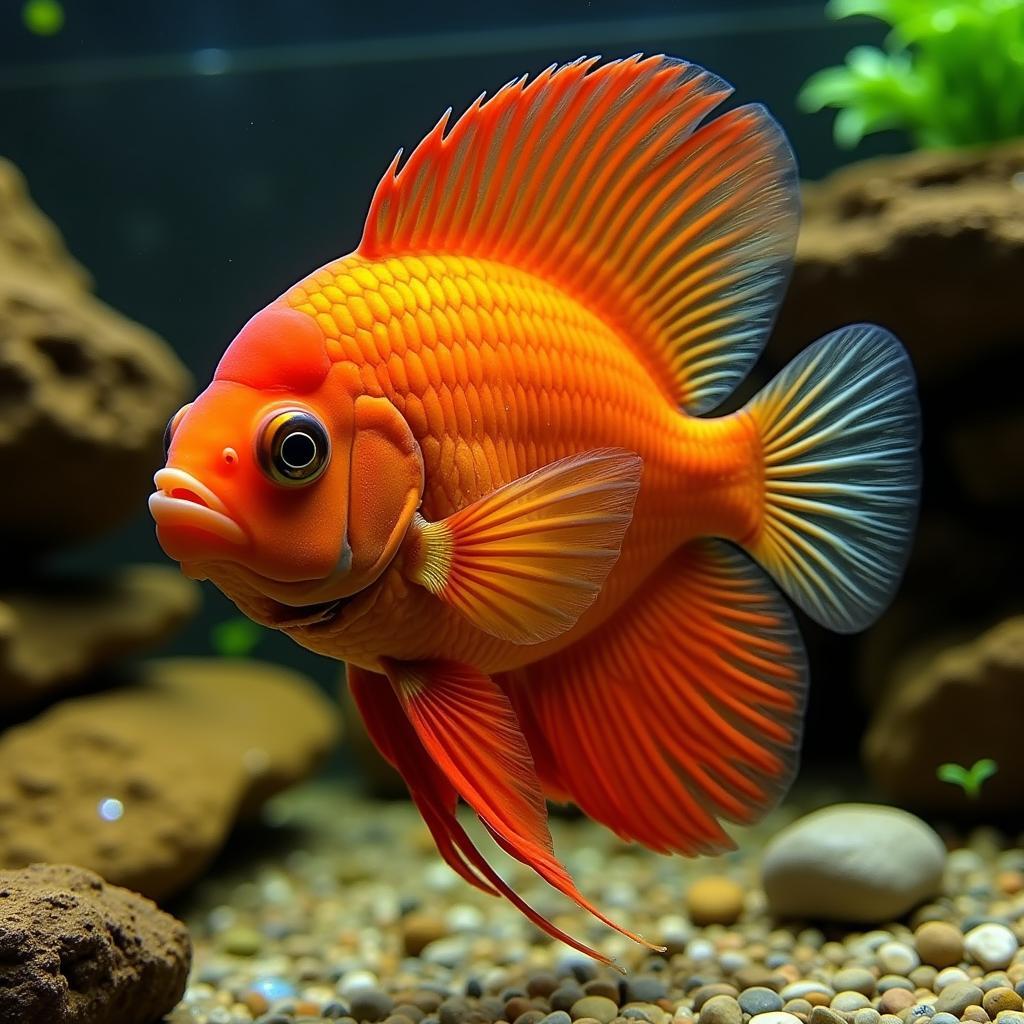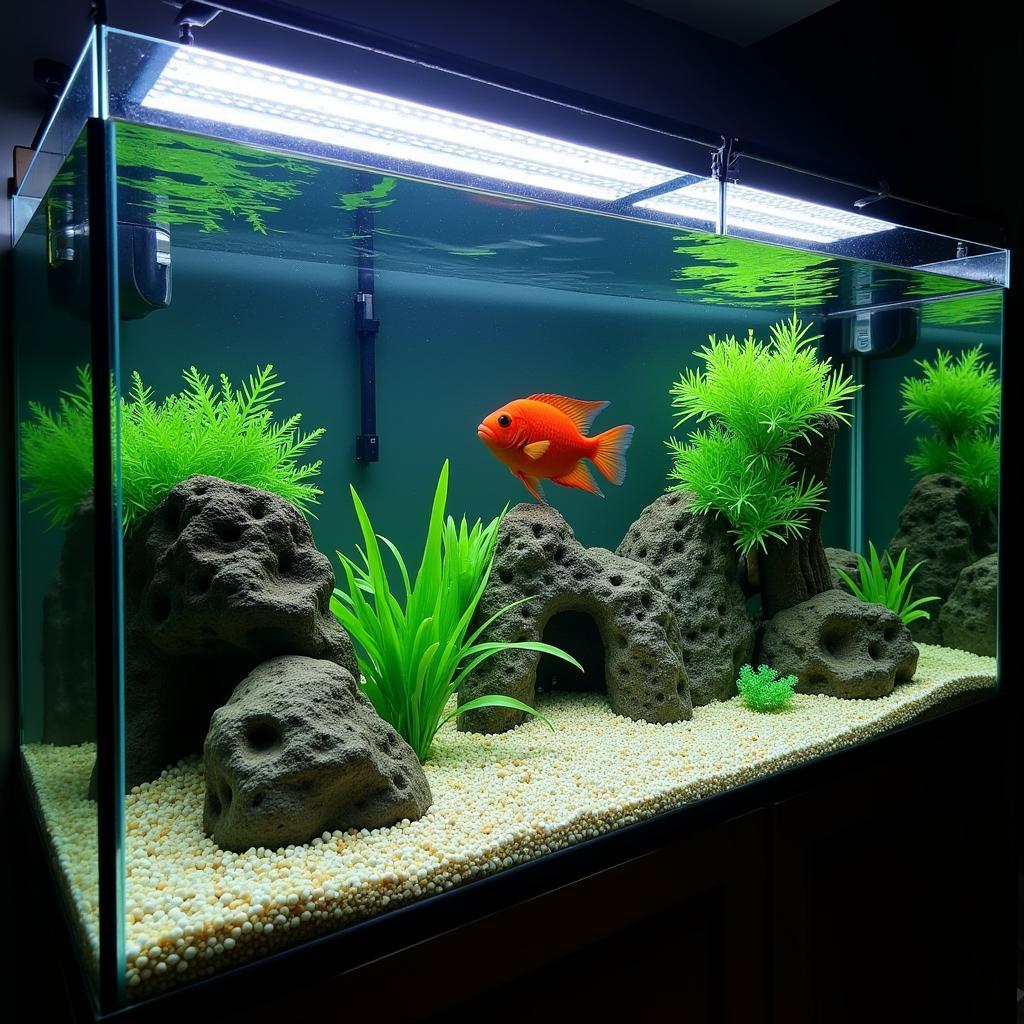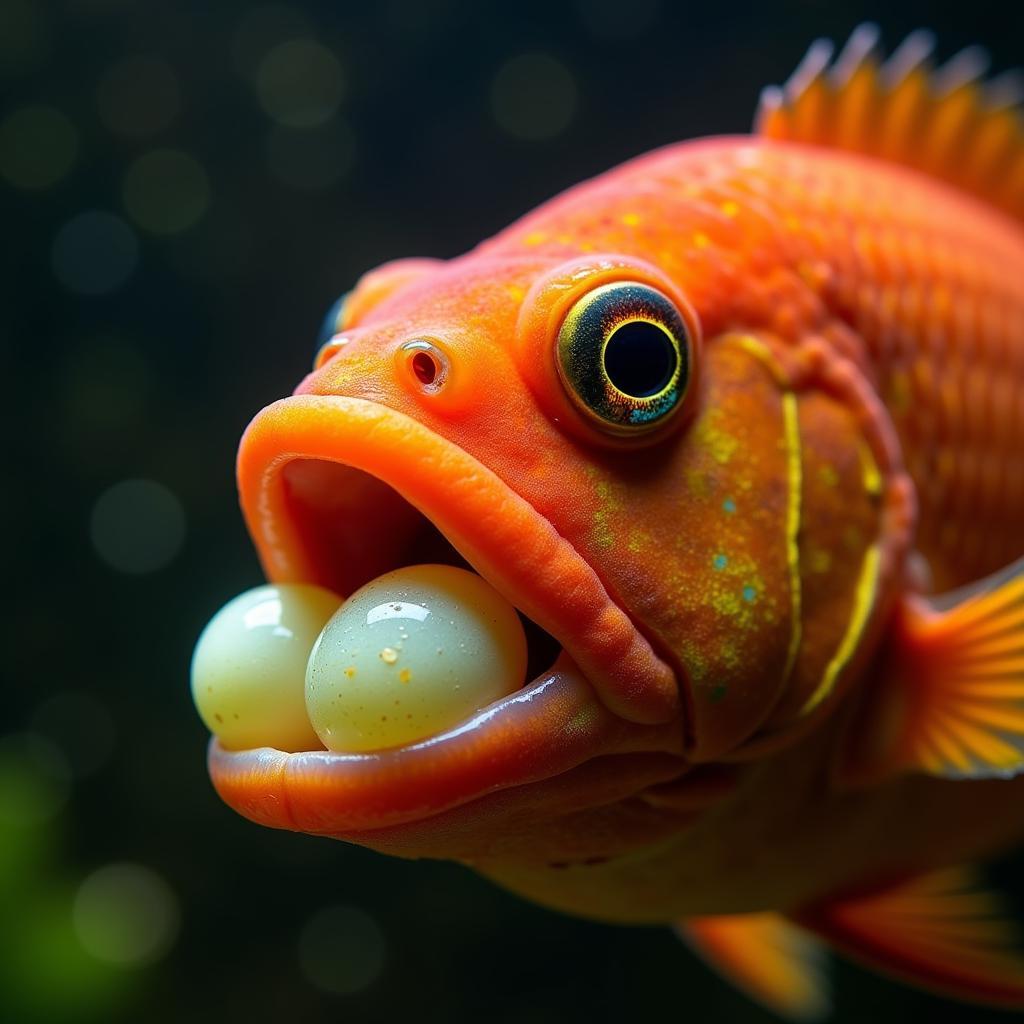The African Cichlid Red Peacock: A Fiery Jewel for Your Aquarium
The African Cichlid Red Peacock, scientifically known as Aulonocara hansbaenschi, is a stunning freshwater fish prized for its vibrant colors and active personality. Native to Lake Malawi in East Africa, this cichlid species adds a splash of the tropics to any home aquarium. This comprehensive guide delves into the captivating world of the red peacock cichlid, covering everything from its natural habitat and unique characteristics to its care requirements and tank setup.
 Male Red Peacock Cichlid Displaying Vibrant Colors
Male Red Peacock Cichlid Displaying Vibrant Colors
Unveiling the Beauty of the Red Peacock Cichlid
The red peacock cichlid is a sight to behold, particularly the males. As their name suggests, they flaunt brilliant shades of red and orange, often with iridescent blue or green markings on their flanks. Females, on the other hand, typically display a more subdued silver or brown coloration. In their natural habitat of Lake Malawi, red peacock cichlids inhabit the rocky bottom areas, where their coloration helps them blend in with the surroundings and ambush prey.
Creating the Ideal Aquarium Environment for your African Cichlid Red Peacock
Replicating the natural environment of the red peacock cichlid is crucial for their well-being in captivity.
Tank Size and Setup
A spacious tank is essential for these active swimmers. Aim for a minimum tank size of 55 gallons for a single male and a few females. The tank bottom should consist of a sandy substrate, and incorporating rock formations, caves, and PVC pipes will provide hiding spots and mimic their natural habitat.
Water Parameters
Red peacock cichlids prefer hard, alkaline water. Maintaining a pH between 7.8 and 8.6 and a temperature between 75-82°F (24-28°C) is crucial. Regular water changes are also necessary to maintain water quality and prevent the buildup of harmful toxins.
 African Cichlid Red Peacock Exploring Its Aquarium Habitat
African Cichlid Red Peacock Exploring Its Aquarium Habitat
Dietary Needs of the Red Peacock Cichlid
In the wild, red peacock cichlids are primarily insectivores. However, in a home aquarium, they can thrive on a varied diet of high-quality cichlid pellets, supplemented with live or frozen foods like brine shrimp, bloodworms, and mysis shrimp.
The Social Dynamics of Red Peacock Cichlids
Red peacock cichlids are known for their relatively peaceful temperament compared to other African cichlid species. They are best kept in a harem setting, with one male and several females. This setup helps to distribute the male’s aggression and promotes breeding behavior.
Breeding Red Peacock Cichlids: A Rewarding Experience
Breeding red peacock cichlids is a relatively straightforward process. Females are mouthbrooders, meaning they incubate the fertilized eggs in their mouths for about three weeks. Providing a cave or other suitable spawning site encourages breeding.
 Female Red Peacock Cichlid with Eggs in Her Mouth
Female Red Peacock Cichlid with Eggs in Her Mouth
Common Health Concerns in Red Peacock Cichlids
While generally hardy, red peacock cichlids can be susceptible to common freshwater fish diseases such as ich and fin rot, especially if kept in poor water conditions. Regular water changes, a balanced diet, and close observation of your fish are crucial for preventing and treating these ailments.
The Red Peacock Cichlid: A Stunning Addition to Your Aquarium
The African cichlid red peacock, with its vibrant colors, engaging personality, and relatively peaceful nature, makes a captivating addition to any home aquarium. By replicating their natural environment and providing proper care, you can enjoy the beauty and wonder of these fascinating creatures for years to come.
Frequently Asked Questions about African Cichlid Red Peacocks
1. How long do African cichlid red peacocks live?
Red peacock cichlids have an average lifespan of 8-10 years with proper care. You can learn more about the African cichlid lifespan in our dedicated article.
2. What are the best tank mates for red peacock cichlids?
Peaceful African cichlids of similar size and temperament, such as haps, make suitable tank mates. Check out our guide on African cichlid haps for more information.
3. How can I tell if my red peacock cichlid is male or female?
Males are typically more vibrantly colored than females. Males also develop a more pronounced nuchal hump on their head as they mature.
4. How often should I feed my red peacock cichlids?
Feeding adult red peacock cichlids once or twice a day is sufficient.
5. What are the signs of illness in red peacock cichlids?
Common signs of illness include lethargy, loss of appetite, clamped fins, white spots on the body or fins, and rapid breathing.
Need help setting up your ideal African fish tank? Looking for high-quality African fish for sale? Contact our experts at +255768904061, email us at kaka.mag@gmail.com, or visit us in Mbarali DC Mawindi, Kangaga, Tanzania. Our dedicated team is available 24/7 to assist you. Explore our comprehensive guide on African cichlid fish care for further insights and expert advice.


